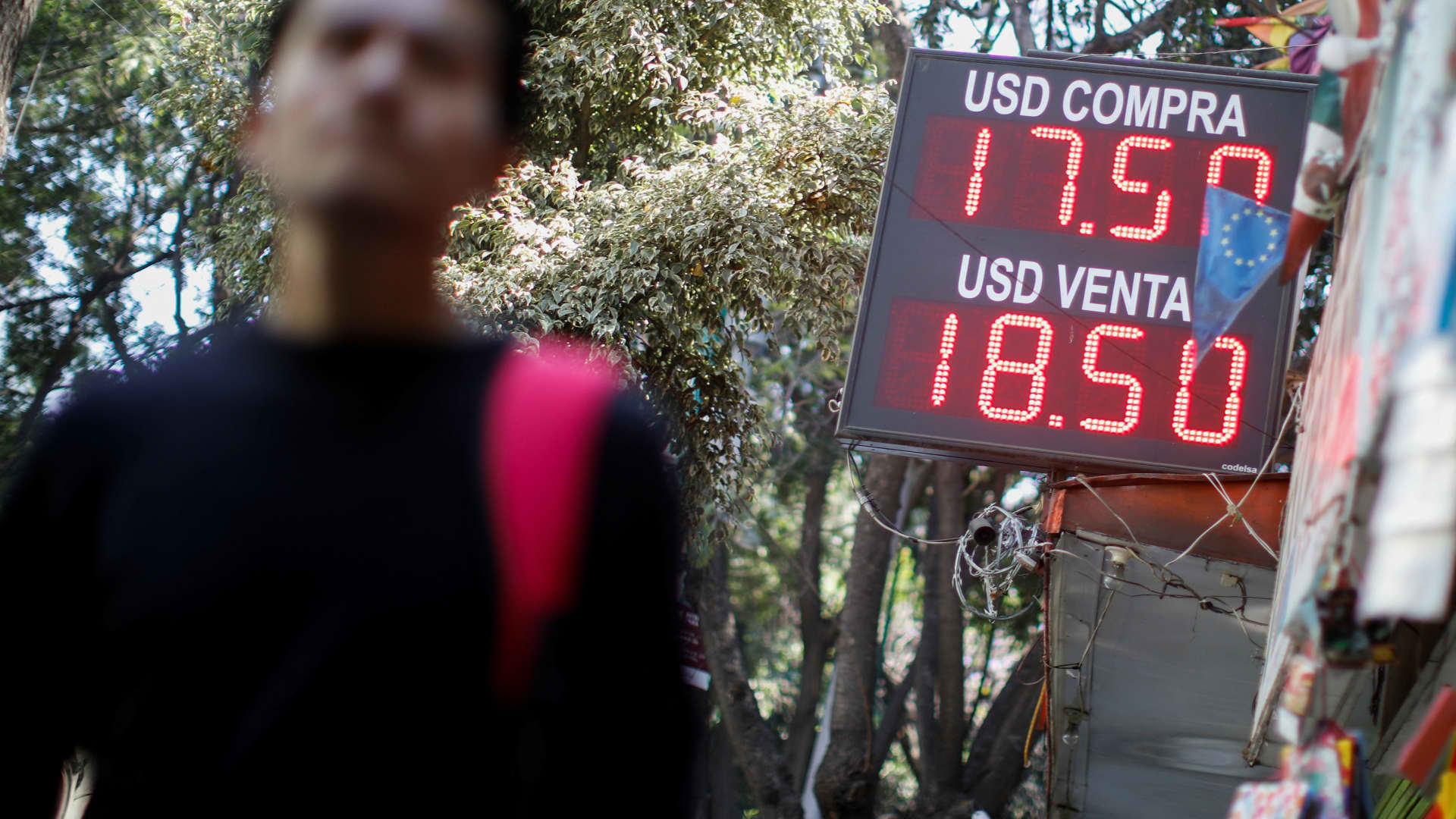People sending money back to Mexico this year have faced a new challenge: the “super peso.”
The Mexican currency reached the strongest levels against the U.S. dollar in almost eight years over the summer.
The skyrocketing peso has eroded the purchasing power of households in Mexico who rely on remittances from abroad. The currency’s rise means every dollar sent home yielded fewer pesos than before.
Lea este artículo en español aquí.
Coupled with inflation at home, the buying power of remittances is set to fall this year over last for the first time in a decade, according to Gabriela Siller Pagaza, chief economist at Banco Base.
“What is truly important for recipients of remittances is not the amount they receive in dollars but the how much they can buy with that in Mexico,” Siller Pagaza said.
In the 12 months ended in August, people sent more than $62 billion in remittances to Mexico, according to Banco Base. Over the same period, the peso advanced more than 15.6% and annual inflation came in at 4.64%.
Siller Pagaza estimates that the spending power of remittances in Mexico will decline 9.9% this year, the first drop in a decade and the largest percentage fall in 13 years.
The peso is down from its highs of less than 17 pesos per U.S. dollar in July, recently at around 18 pesos per dollar this week. At the start of the year, each U.S. dollar was worth 19.46 pesos.
The currency’s surge has drawn more from the pockets of those sending U.S dollars to Mexico. People looking to send money to the country from the U.S. have found themselves forced to increase the amount to try to keep up.
For example, at the peso’s peak in July, a person who wanted to get 1,000 pesos to someone in Mexico would have to send about $60. A year earlier, it took around $49.
Eric Vasquez, a 44-year-old busboy at a New York City diner, is one of those people who has had to increase his contributions for his wife and three children who live in Mexico City.
“Before I used to send $100,” Vasquez said outside of a money transfer business in the Corona section of Queens, New York. “Now I have to send $130, $140 to cover expenses.”
Those money transfers include fees for school for his children, food and transportation.
Vasquez said he has lately been sending closer to $200 a week back home: “The more my children grow, the more money I have to send.”
Melchor Magdaleno, 33, said for the last three to four months, he’s been sending $120 a month back to his wife and five children in Tlapa de Comonfort, in the southern Guerrero state of Mexico. He used to send $100 every two weeks, he said, but this year increased the amount due to the exchange rate and higher costs in Mexico.
Mexico’s inflation has eased in recent months but is still up 4.45% on the year, according to the latest read.
Dilip Ratha, an economist at the World Bank who focuses on remittances, noted that money transfers into Mexico have soared in recent years, driven in large part by the strong U.S. economy.
But the peso’s appreciation, tied in part to near-shoring of manufacturing from Asia to Mexico and economic strength in both the U.S. and Mexico, could hurt Mexican households that use remittances for household budgets.
Ratha said some families could cut back on certain spending to handle fixed costs like rent or mortgages.
“People will continue to send money but the fact that economies are slowing, inflation is up, their purchasing power is eroding,” said Ratha. “The welfare effects of the situation will be quite significant.”
Mexico is the second-largest recipient of remittances worldwide after India. The transfers make up around 4% of the country’s gross domestic product.
While remittances are likely to reach a record again this year, the rate of growth will likely slow, economists said, as senders and recipients grapple with inflation, squeezing household budgets.
And the impacts could be felt in both the U.S. and Mexico.
“Mexicans in the U.S. and their relatives back home are both facing higher inflation, and wage growth has not kept up in both places,” Ratha said. “Consumption has to adjust.”
